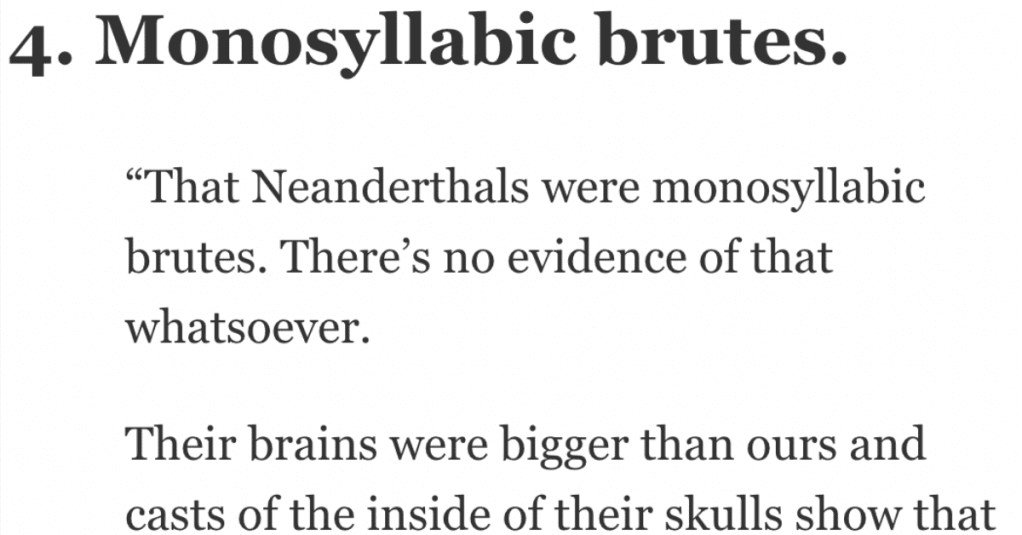Trending Now
There are so many things that we just believe to be true or real, just because at some point, an authority figure told us they were. But here’s the thing: so much has changed over the years, even with the way we understand and teach fairly recent human history, so it turns out that a lot of that stuff is actually not right at all.
If you’re interested in what myths deserve to be busted for good, these 11 history buffs are weighing in on the ones that really drive them nuts.
11. They weren’t the nice guys.
“Knights weren’t exactly chivalrous. It was a concept designed to make them appear magnanimous and to justify their brutality among the common folk of their enemies when they weren’t at war.
Knights could even pay their respective kings to chicken out of fighting in a war if they were summoned to do so, which many did to keep on pillaging hovels full of bumpkins because it was an easy sport. In short, a lot of Knights were rich, murderous bullies with too much free time on their hands.”
10. Cowboys weren’t white.
“Cowboys were not cool white guys with endless independence!!! Cowboys were in fact largely black, Mexican, and Native American men who were in need of money and were seen on the low end of social hierarchy. Originally they used whips and dogs to control their herd.
Eventually, the Lazo became the lasso, chaparajos became chaps, and the sombrero turned into the ten-gallon cowboy hat we know today. Herding cattle was hard work and were beneath “respectable white folk”.
Cowboys were in fact not rugged icons of independence, but took orders like everyone else and made wages lower than skilled factory pay. Cowboys could also come as young as 12 years old.”
9. Stay in your lane.
“That corsets were uncomfortable and prevented free movement and breathing, so were a way of physically subjugating women. Firstly, this is often asserted by people who don’t know the difference between bodies, stays, and corsets, proving that they’re waaaaay out of their lane.
It’s pretty obvious even just from contemporary art that women were perfectly capable of getting through physical labor including farm work in that kind of supportive garment whether stiffened with interfacing/stitching or “boning” (not necessarily made of bone).
And if you’ve ever worn one, you’ll know how great they are for supporting your back and core. They’re much more comfortable than bras, in my opinion.
Oh, and they didn’t leave red marks all over your skin because unlike a bra you’d never have worn one against your skin (too difficult to wash) but over a shift/chemise/combination garment of some kind. Try putting your bra OVER a tank top or similar, and note (1) no loss of support, (2) much kinder to the skin, and (3) bra needs much less frequent washing.”
8. Many Presidents did, but not him.
“I have had way too many of my university students tell me that Lincoln owned slaves.”
7. Maybe it was tasty.
“Medieval peasant food was bland. People seem to think peasants only ate bread and potatoes with no seasoning. In reality, while salt was indeed a luxury they often couldn’t afford, they had access to plenty of herbs to flavor their food. They also had access to things like fish and other meats, so they weren’t just eating bread, though it was an important staple of their diet.
If you’re interested in how a bunch of civilizations ate throughout history, check out Tasting History on YouTube. It’s a great source of historical information and entertainment.”
6. She was teeny-tiny.
“It’s petty, but I hate it when people say that Marilyn Monroe was a size 12/14/16. This may have been true in the 1950s, but clothes sizes have changed A LOT since then.
Reports of Marilyn’s measurements by her costumers noted that she was 5 ft. 5.5 inches tall; 35-inch bust; 22-inch waist; and 35-inch hips and 118 pounds. Of course, her weight fluctuated, but it is simply dishonest to think that in modern times, she would have been considered “plus-size.”
In today’s sizing, depending on where she’d shop at, she would be a size 00-4.”
5. She did. Bless her heart.
“The belief that Anastasia did not die with the rest of her family.”
4. Monosyllabic brutes.
“That Neanderthals were monosyllabic brutes. There’s no evidence of that whatsoever.
Their brains were bigger than ours and casts of the inside of their skulls show that they had all the same structures our brains had. Their tool-making was comparable to any Homo sapiens’ took making (at least before the Great Leap Forward) and they lived in communities just like we did.
We also regularly mated with them and had kids, which I really don’t think we would if they were little more than quasi-gorillas.”
3. A funny misconception.
“That Napoleon was short. Dude was 5″6′. Making him downright average for the European standard at the time.
A brief investigation shows this was a rumor that his enemies spread in order to diminish his reputation and how serious his subjects took him. Funny error, but still an error.”
2. There are many factors.
“People didn’t die at 30-40. The high infant mortality rate skews the average. If you could survive into your teen years you had a pretty good chance of living into your senior years.
Obviously, there are a lot of factors to consider(eg class, gender, occupation, where you lived, etc.)”
1. They really were rebels.
“Only around 40% of colonists supported the American Revolution. Another 40% was indifferent, and about 20% sided with the British. Most Americans think that it was the vast majority who wanted Independence.”
I think I knew most of these, but I’m definitely going to keep passing them on.
What’s a historical inaccuracy you would love to right? You’re welcome to do just that in the comments!






